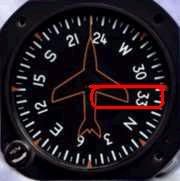DJRobbioRobbio said:I do believe it's when you pass the fix the second time, and you're established in the hold.... with your minute inbound leg...
I always report right after crossing the fix the first time during the entry. I suppose if ATC asks you to "report established" in the hold, it's a bit different. I've always been asked to "report entering" a hold.
My big problem now is figuring out HP entries..... Anybody with good mental tips to remember which headings give you which pattern entries?
Sure. Let's say that you were told to hold north on the XYZ 360-degree radial.
Direct: Simply look at the outbound course of the radial you'll be holding on, and turn to that heading. In this case, your outbound turn after reaching the fix the first time will be to heading 360, since you're holding on the 360 degree radial. Note that once you complete your turn to heading 360, you're established on the outbound leg of the hold.
Teardrop: I've always used the "LARS" acronym for this. You know that you'll be turning 30 degrees in some direction once reaching the holding fix, but LARS clears it up. LARS stands for "Left Add, Right Subtract." If you're setup for a teardrop entry and you'll be holding with left turns, simply add 30 degrees to whatever your outbound course is. If you're holding with right turns, subtract 30 degrees from your outbound.
For our example: Let's say that you're approaching XYZ from the southeast on the 150 degree radial. We know that since we'll be holding with right-hand turns, we have to subtract 30 degrees from the outbound course. Our outbound course in the example is 360, so the initial turn will be to heading 330.
Parallel: Just like a direct entry, your initial turn after crossing the fix will be to the outbound course. Much unlike the direct entry though, you won't be established on the outbound leg. You'll be paralleling the inbound leg on the non-protected side. Still using the XYZ R-360 example, let's say that you're approaching XYZ from the west on the 270 degree radial. Once you cross XYZ, you'll make a left-hand turn to heading 360 and count out your 60 seconds when appropriate. Now, you typically have two options:
1. You can make a long left-hand turn to heading 140-150 in order to set up for a 30-40 degree intercept for the inbound course from the protected side. This is my preferred method. Just to reiterate, after your 60 seconds on the outbound course is up, you'll be turning towards the protected side. Watch out that you don't turn the wrong way.
2. You could do a "90-270" turn, which just entails a 90 degree left-hand turn to heading 270 (again, towards the protected side), then after getting wings-level, a long 270 degree right-hand turn to heading 180. Timed properly, you'll roll wings-level on heading 180 on your inbound course.
Either method works, but as I said, I like #1. I wish I could draw these out for you (I hope that I'm making sense), but I suppose that's what your instructor is for.






